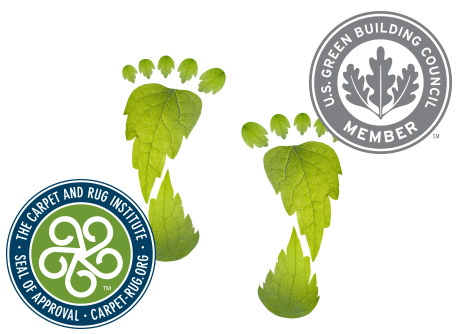Green vs. Greenwashing
By now, it’s pretty safe to say that the green movement has reached mass appeal in the jan/san industry. Before marketing yourself as eco-friendly, however, it’s important to understand the difference between “green” and “greenwashing.”
What is greenwashing?
Trying to appear greener than you are is called greenwashing (the word is a spin on the term “whitewashing,” which means glossing over wrongdoing). The word is lobbed at companies that spend more time and money on marketing themselves as green than they do on actually reducing their environmental impact.
How do companies do it?
TerraChoice Environmental Marketing categorized marketing claims into these “7 sins of greenwashing”:
- Sin of the hidden trade-off: committed by suggesting a product is “green” based on an unreasonably narrow set of attributes without attention to other important environmental issues (e.g., paper produced from a sustainably harvested forest may still yield significant energy and pollution costs).
- Sin of no proof: committed by an environmental claim that cannot be substantiated by easily accessible supporting information or by a reliable third-party certification (e.g., paper products that claim various percentages of postconsumer recycled content without providing any evidence).
- Sin of vagueness: committed by every claim that is so poorly defined or broad that its real meaning is likely to be misunderstood by the consumer (e.g., “all-natural”).
- Sin of irrelevance: committed by making an environmental claim that may be truthful but is unimportant or unhelpful for consumers seeking environmentally preferable products (e.g., “CFC-free” is meaningless given that chlorofluorocarbons are already banned by law).
- Sin of lesser of two evils: committed by claims that may be true within the product category, but that risk distracting the consumer from the greater health or environmental impacts of the category as a whole (e.g., organic cigarettes).
- Sin of fibbing: committed by making environmental claims that are simply false (e.g., products falsely claiming to be Energy Star certified).
- Sin of false labels: committed by exploiting consumers’ demand for third-party certification with fake labels or claims of third-party endorsement (e.g., certification-like images with green jargon such as “eco-preferred”).
How common is it?
Of the more than 2,000 products of all types making green claims, as many as 98% are guilty of some degree of greenwashing, according to a 2010 study from TerraChoice. Of the 397 cleaning and paper products it assessed, TerraChoice said only 3 made no unsubstantiated or unverifiable green claims. The study found that cleaners, along with cosmetics and children’s products, are most prone to greenwashing.
What does it matter?
In addition to being unethical, greenwashing is illegal. The Federal Trade Commission (FTC) has strict guidelines, called Green Guides, that address misleading claims. Those regulations, coupled with increasing public outrage over greenwashing, resulting in more legal actions against companies using deceptive marketing practices.
How do I avoid it?
Worried your suppliers might be greenwashing (or that your company could unknowingly be guilty)? Here are a few ways to make sound choices:
- Don’t be fooled by clever packaging. Green bottles and pictures of mountains and streams don’t mean what’s inside is actually better for the environment.
- Avoid products that use generic terms like “green” or “safe,” or that make vague claims like “contains 50% more recycled content” (50% more than what?). Instead, ask for specifics and statistics about how the product is sustainable.
- Get familiar with the FTC Green Guides so you know which types of claims require verification and disregard any that don’t.
- Choose products with third-party certifications. Visit ecolabelling.org to search more than 300 labels and learn how manufacturers obtain certification.
- Check the third-party certifier’s website to verify that the product in question actually earned the label it claims.
Green Carpet Cleaning

The Carpet and Rug Institute (CRI), has developed a testing and “Seal of Approval” certification program for evaluating carpet cleaning extractors. The tests measure soil removal as well as the extractor’s effectiveness in recovering water from carpets because of the potential for mold to develop. Additionally, the extractor must not harm the carpet pile, helping extend the life of carpets.

